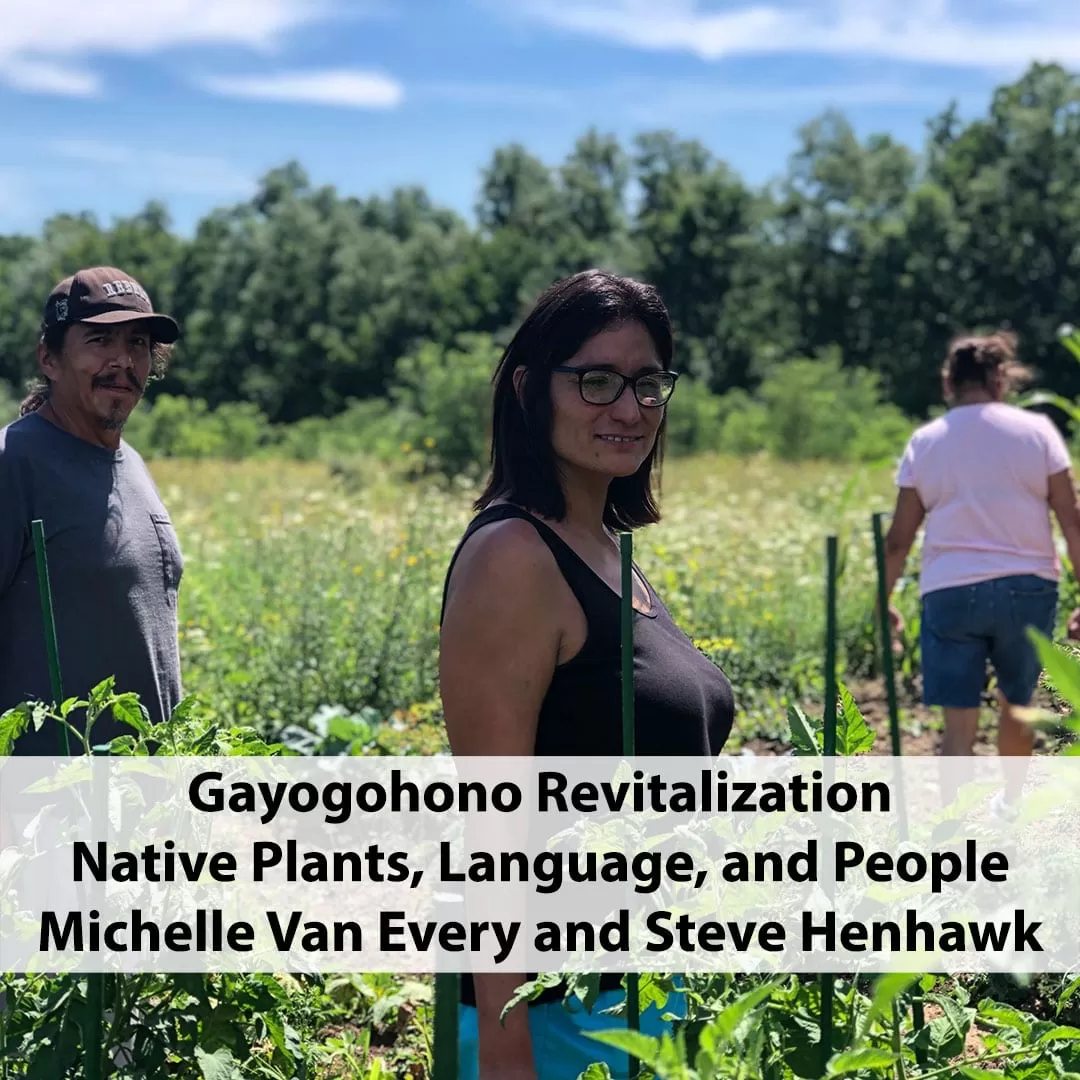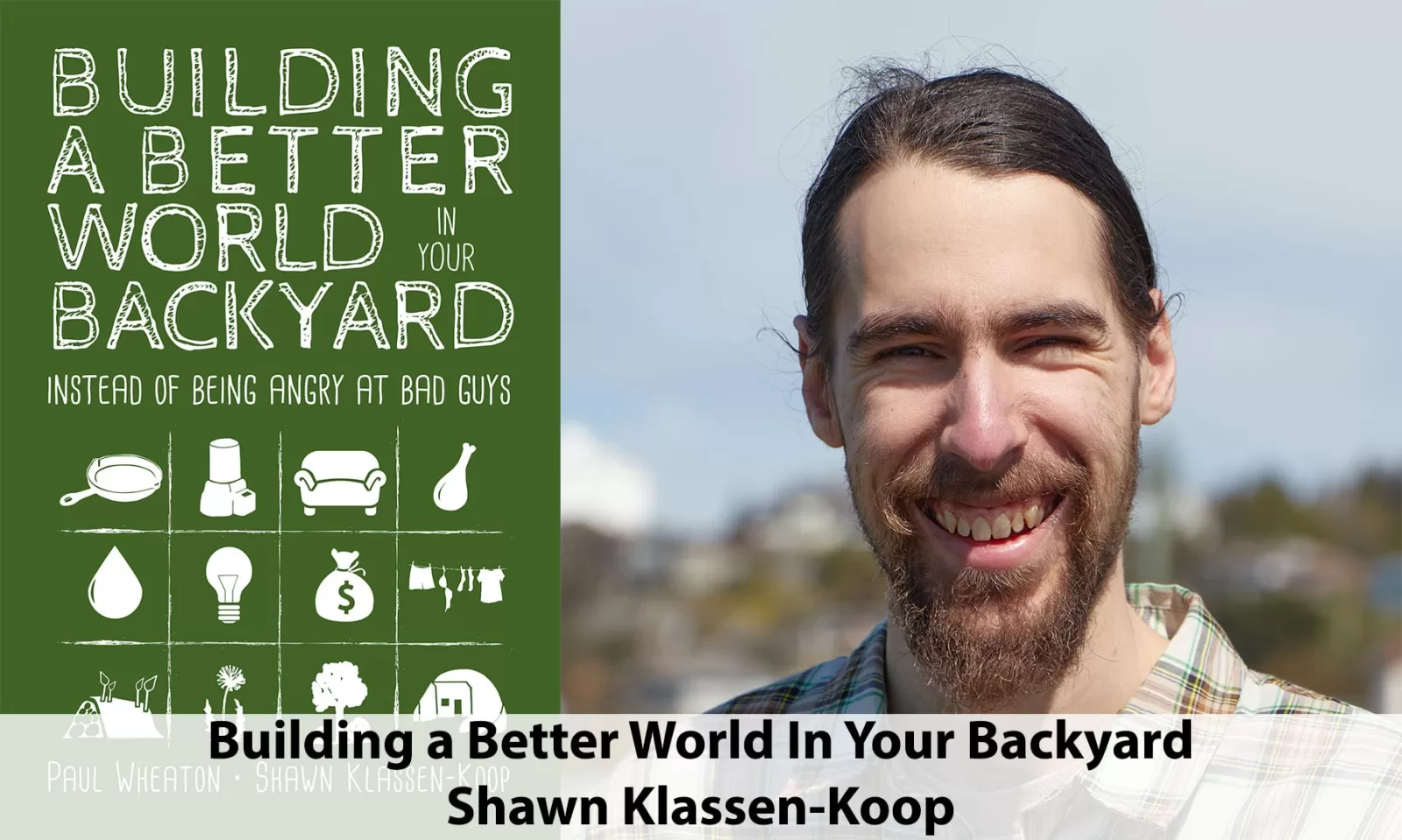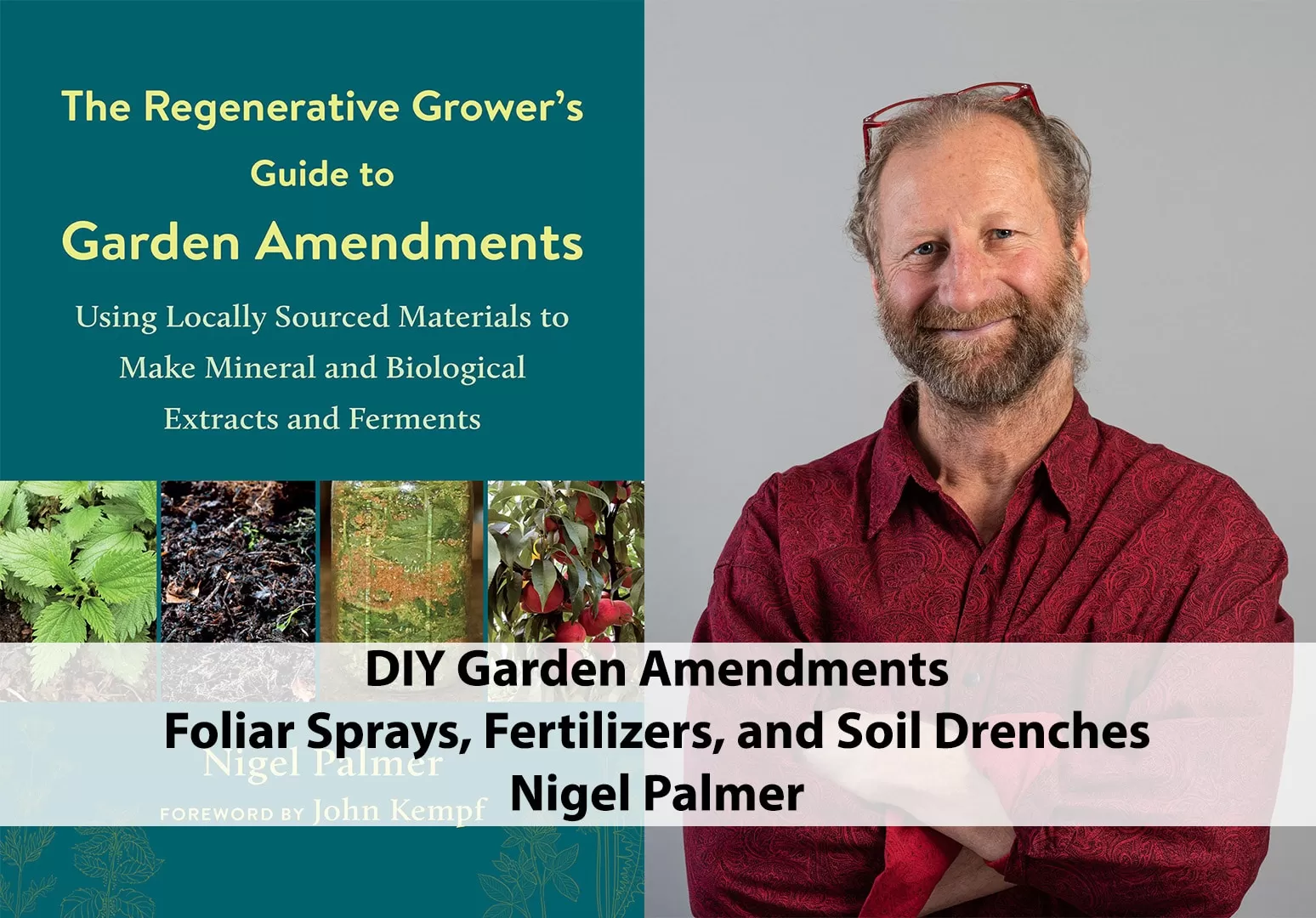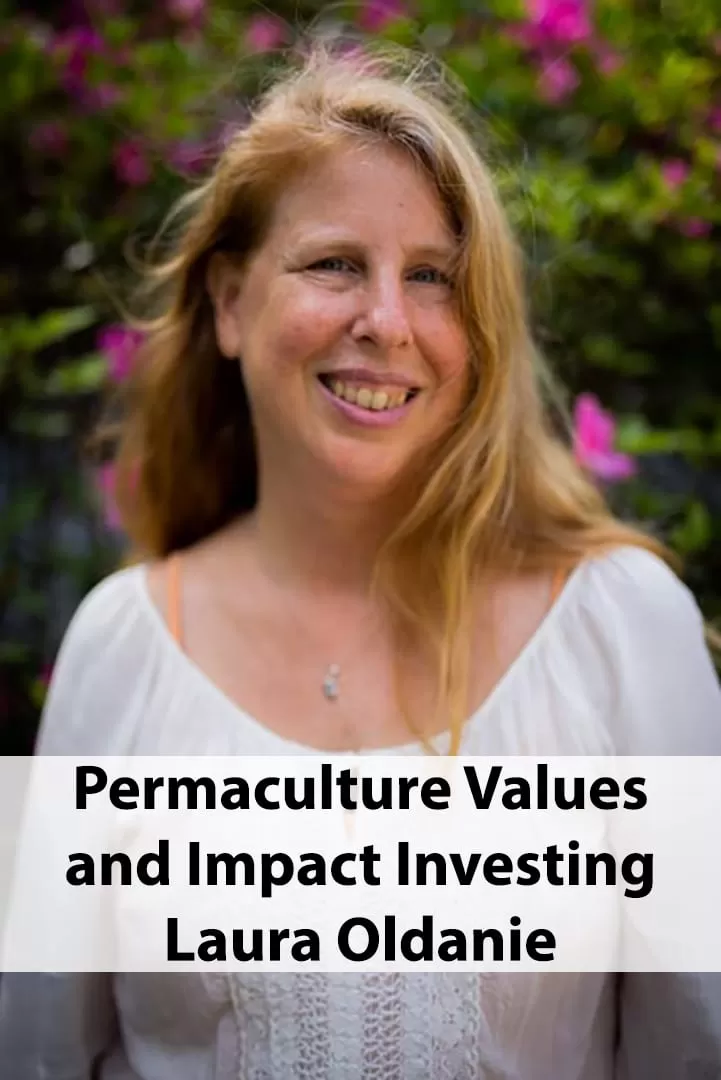Geoff Christou - We are Time Scouts, Designing for the Future
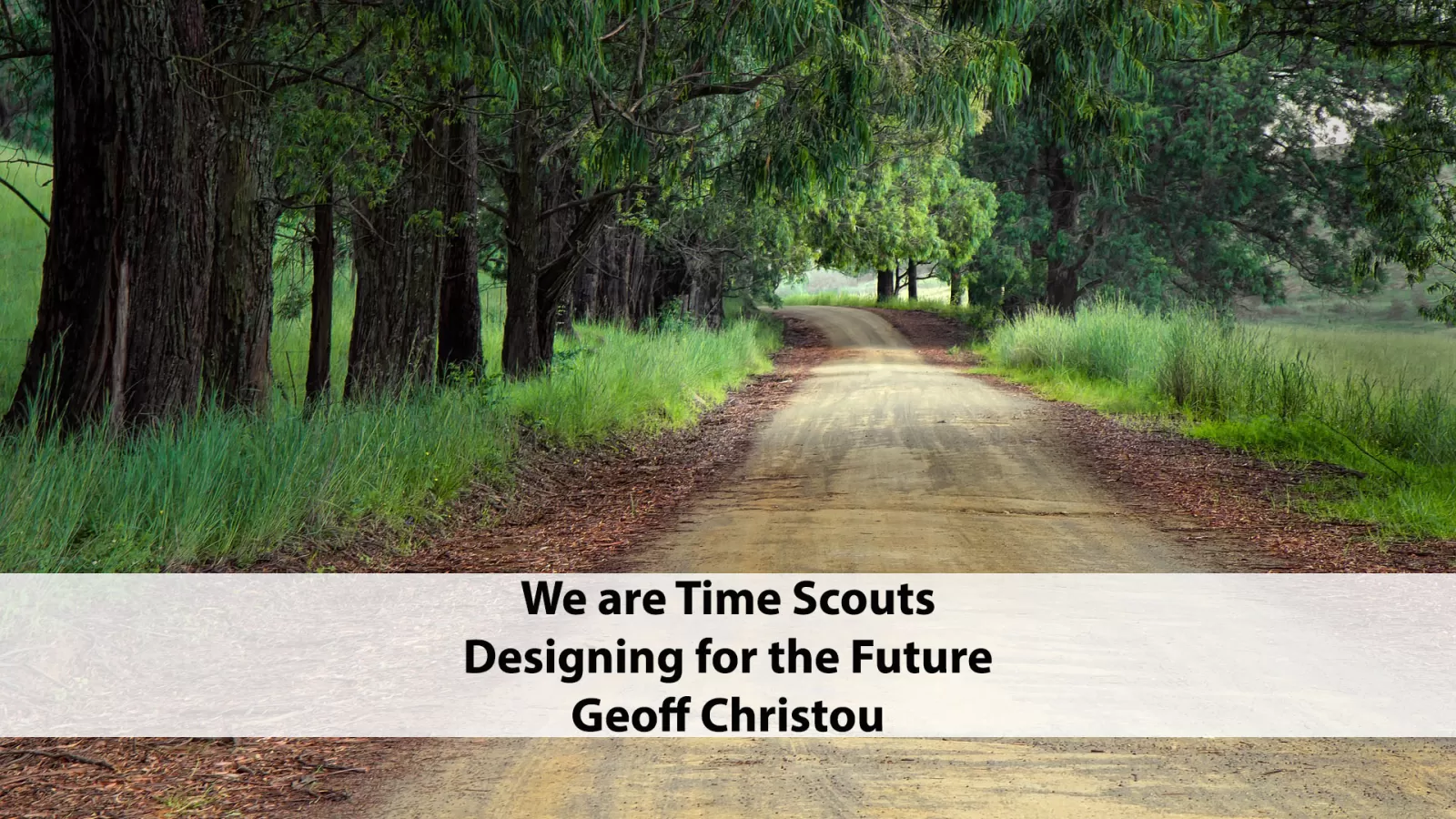
The title for this episode is based on a quote from Bill Mollison that my guest, Geoff Christou, paraphrases in the middle of our conversation today about how Utopian literature, the need to imagine the future, and sharing that vision with others through stories, can help our work as permaculture practitioners. That we can create more abundant designs by first sitting down and thinking about what we want in the place where we live, in our relationships with Earth and other life, and in the wider world. By knowing those stories deeply—to inhabit them—we can teach others to yearn for a vast, bountiful, and regenerative life.
Find out more about Geoff's work and pick up an e-book copy of his novel at permacultureutopia.com.
As I said in the beginning, the title for this episode is based on a quote from Bill Mollison. The text of that is:
When we design, we are always building for future floods, future fires, future droughts, and planting a tree a few inches tall that will be future forest giants, throw future shadows. Future populations will need future soils and forest resources, shelter, security. So somebody needs to range ahead in time, scout out the next century. We are not daydreaming. We are time scouts.
Each of us can contribute to this act of scouting the future by taking those thoughts we have of what could be, of what might be, or what we can imagine, and putting them down somewhere where they can be shared. Though Geoff and I spoke about the idea today in a novel, any form of art whether painting or play, can share what is possible.
So, I’m wondering, do you have any examples of permaculture art? I’m interested in hearing about long-form literature, short stories, paintings, photographs, any medium that might inspire the imagination. If you have something like this floating about in your own collection, please send me an email with the subject, “Permaculture Art.”
As Geoff mentioned during the interview, I’ve been exploring the idea of The Permaculture Pit, and how each of us can move through the period of inspired uncertainty that follows a permaculture design course. If you find yourself in this place and are looking for the resources, opportunities, and ideas that can help you take your next steps, I’m here to help.
If you’re working on a permaculture design, homestead, or other work and would like me to bring my decade of experience and training to your project, you can schedule a 30 or 60-minute consultation for us to review what you're working on.
Finally, if you would be interested in a workshop on Storytelling for Design, please get in touch and I’ll put you on the mailing list for the upcoming class. The Permaculture Podcast
Until the next time, tell the stories that share your vision of the future, while taking care of Earth, your self, and each other.
Related Interview
Managing Complexity
Resources
High Park - Black Oak Savannah
Douglas Cardinal - Canadian Architect
Thomas More - Utopia (Wikipedia)
Utopia (Full Text - Project Gutenberg)
William Morris - News from Nowhere (Wikipedia)
News from Nowhere (Project Gutenberg)
Charles Fourier (Wikipedia)
Christopher Alexander - The Battle for the Life and Beauty of the Earth (Oxford University Press)



